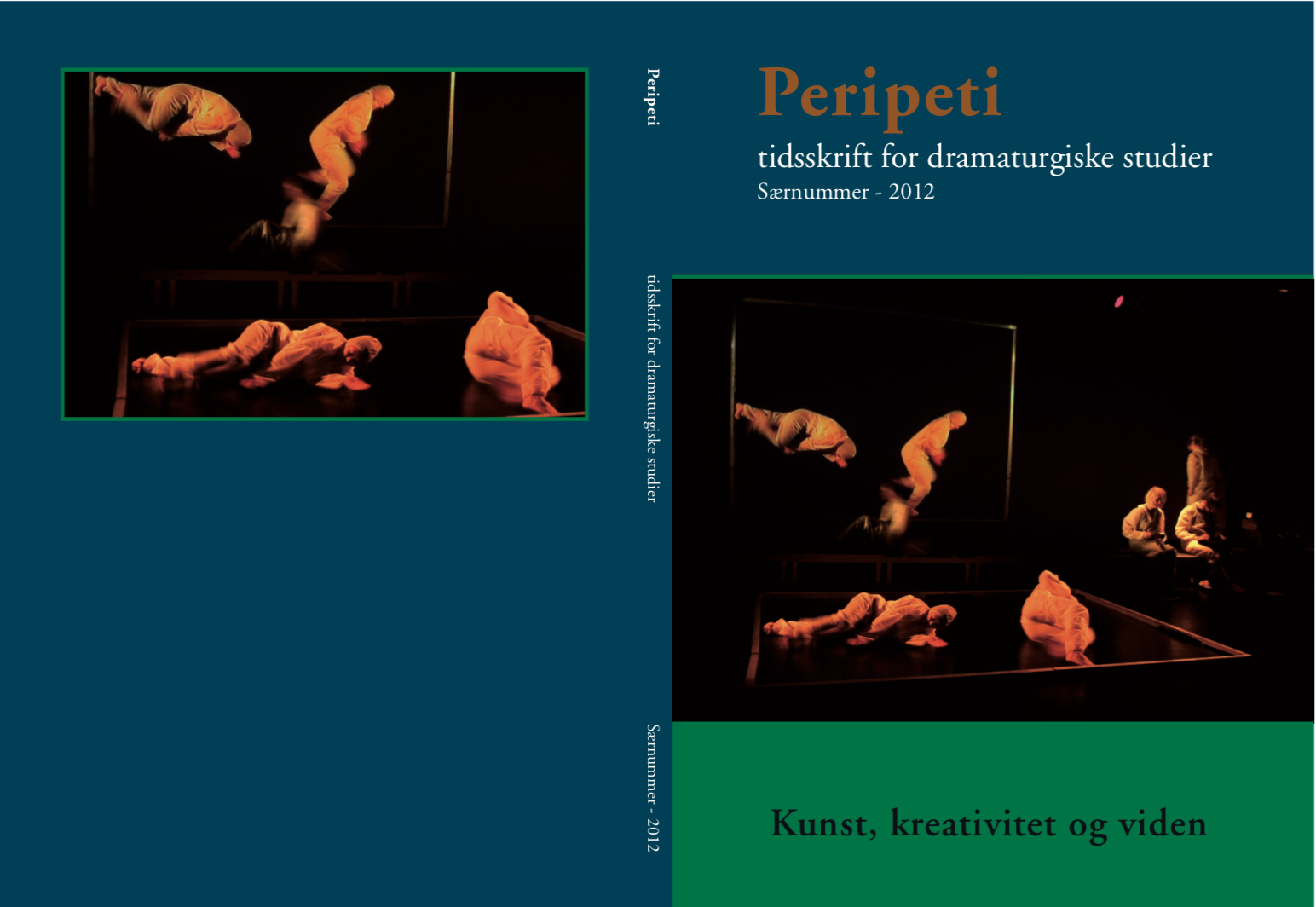Stemme, lytning og kreativitet
En metodologisk undersøgelse baseret på to cases
DOI:
https://doi.org/10.7146/peri.v9iS4.110576Nøgleord:
Kreativ lytning, stemmen i RytterietResumé
What happens when we listen to voices? How does satire based on vocal performance work and function when listening, voice and creativity meet? Is it possible to understand our own listening and voice activity through the discourse of creativity? Based on two cases, this article examines how we may understand the activities of voicing and listening from the perspective of creativity and creation: with regards to fictive characters as well as with regards to our own knowing and being in the world.
I artiklen sammentænker Lønstrup iscenesættelse og afprøvning af lytte- og stemmeaktivitet i et pædagogisk perspektiv – med et aktuelt eksempel på markant dansk satireunderholdning, Rytteriet, som opererer med basis i stemmekarakterer og stemme-imitation. På baggrund af caseundersøgelsen af kreativt lytteri og kreativ stemmeproduktion drøfter Lønstrup, hvordan vi kan forstå stemme og lytning som led i kreativitet og skabelse: af mulige og fiktive personfigurer samt af os selv og vores væren i og viden om verden.
Referencer
Bröckling, Ulrich. 2006. “On Creativity: A brainstorming session”, Educational Philosophy and Theory, Vol. 38, No. 4.
Deleuze, Gilles, 1968. Différence et répétition. Paris: Presses Universitaires de France..
Feld, Steven, 2004. “A Rainforest Acoustemology” in Bull/Back (red.): The Auditory Culture Reader, Berg Publishers
Frayling, Christopher, 1993/1994. Research in Art and Design. I Royal College of Art Research Papers, vol. 1, (no. 1).
Ihde, Don. 2007, Listening and Voice. Phenomenologies of Sound, Second edition. State University of New York Press, Albany.
Løgstrup, K.E, 1976. Vidde og Prægnans. Sprogfilosofiske Betragtninger. Metafysik I. Kbh.: Gyldendal.
Lønstrup, Ansa.,2004. Stemmen og øret. Studier i vokalitet og auditiv kultur. Århus: Klim.
Lønstrup, Ansa (in print). “Stemme, lyd og lytning i Samtid og Kunst”, Dansk Musikforskning Online.
Pennycook, Alistair, 2007. `The Rotation Gets Thick. The Constraints get Thin´: Creativity, Recontextualization, and Difference, Oxford Journals, Humanities, Applied Linguistics, Volume 28 (Issue 4).
Jonathan, Rée, 1999. I see a Voice. A philosophical History of Language, Deafness and the Senses. London: Harper Collins Publishers.
Stephensen, Jan Løhmann, 2008. Kunst, kreativitet, arbejde: Forskydninger i kunstens utopiske legitimering, Æstetik og politik: Analyser af politiske potentialer i samtidskunsten. Århus: Klim.
Stephensen, Jan Løhmann, 2010. Kapitalismens ånd og den kreative etik. Aarhus: Digital Aesthetics Research Centre/The Aesthetics of Interface Culture.
Stockfelt, Ola, 1988. Musik som lyssnandets konst, Musikvetenskaplige institutionen, Göteborg.
Stockfelt, Ola, 2005. Adequate Modes of Listening, Cox, Christoph /Warner, Daniel (eds.): Audio Culture, N.Y. & London: Continuum.
Downloads
Publiceret
Citation/Eksport
Nummer
Sektion
Licens
Det følgende vedrører alle Peripeti-udgivelser fra 2024, nr. 39, og senere:
Peripeti er et Diamond Open Access-tidsskrift, der giver direkte open acces til publiceret indhold ud fra princippet om, at det at gøre forskning frit tilgængelig for offentligheden understøtter en større global udveksling af viden.
Forfattere skal ikke betale for indsendelse, redigering eller offentliggørelse af artikler.
Forfattere, der bidrager til Peripeti, bevarer ophavsretten til deres artikler.
Forfattere accepterer at udgive artikler under en Creative Commons CC-BY-NC 4.0-licens. Vilkårene for denne licens tillader brugere frit at kopiere og videredistribuere materialet i ethvert medie eller format og at tilpasse, transformere og bygge videre på materialet, så længe der gives passende kreditering, et link til licensen gives, og eventuelle ændringer angives. Brugere må ikke dele eller tilpasse materialet til kommercielle formål uden samtykke fra licensgiveren. Brugen af licensen må ikke på nogen måde antyde, at licensgiveren støtter tredjeparten eller dennes brug. Licensen kan ikke tilbagekaldes.
Forfattere opfordres til at lægge deres artikler ud på personlige og/eller institutionelle hjemmesider for at sikre endnu større offentlig adgang efter udgivelsen. Forfattere har ret til at arkivere deres artikler i fondes og offentlige institutioners arkiver, men Peripeti anmoder om, at forfattere bruger et direkte link til den publicerede artikel på tidsskriftets hjemmeside, når det er muligt, da Peripeti som en ikke-kommerciel, offentligt finansieret udgiver er afhængig af niveauet af brugeraktivitet på tidsskriftets hjemmeside.
Vedrørende tidligere udgivelser, indtil 2024, herunder nr. 38:
Ophavsretten deles mellem Peripeti og forfatteren/forfatterne. Tidsskriftet er et open access-tidsskrift, der giver direkte adgang til alt indhold baseret på princippet om, at det at gøre forskning frit tilgængelig for offentligheden understøtter en større global udveksling af viden. Brugere kan frit kopiere og dele materiale i ethvert medie eller format, så længe der gives passende kreditering. Enhver anden brug kræver skriftligt samtykke fra indehaverne af ophavsretten.





